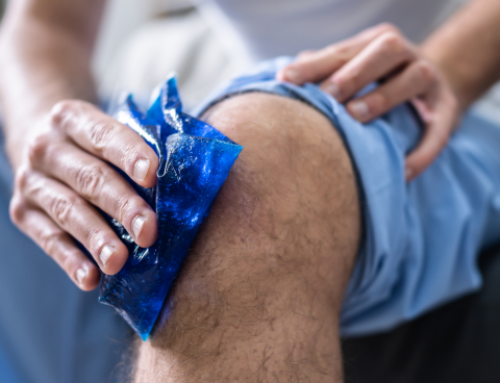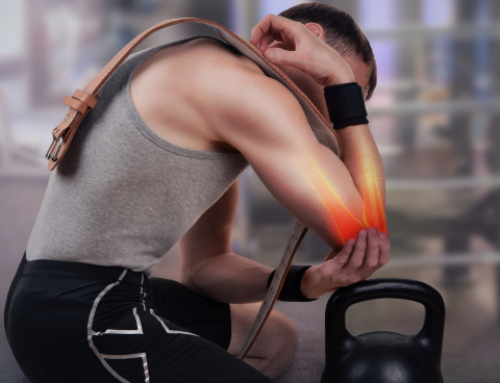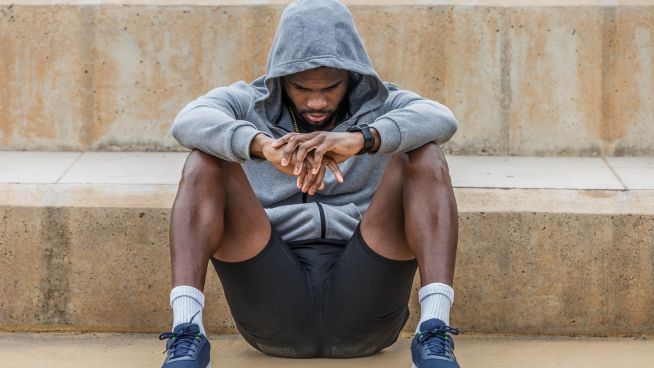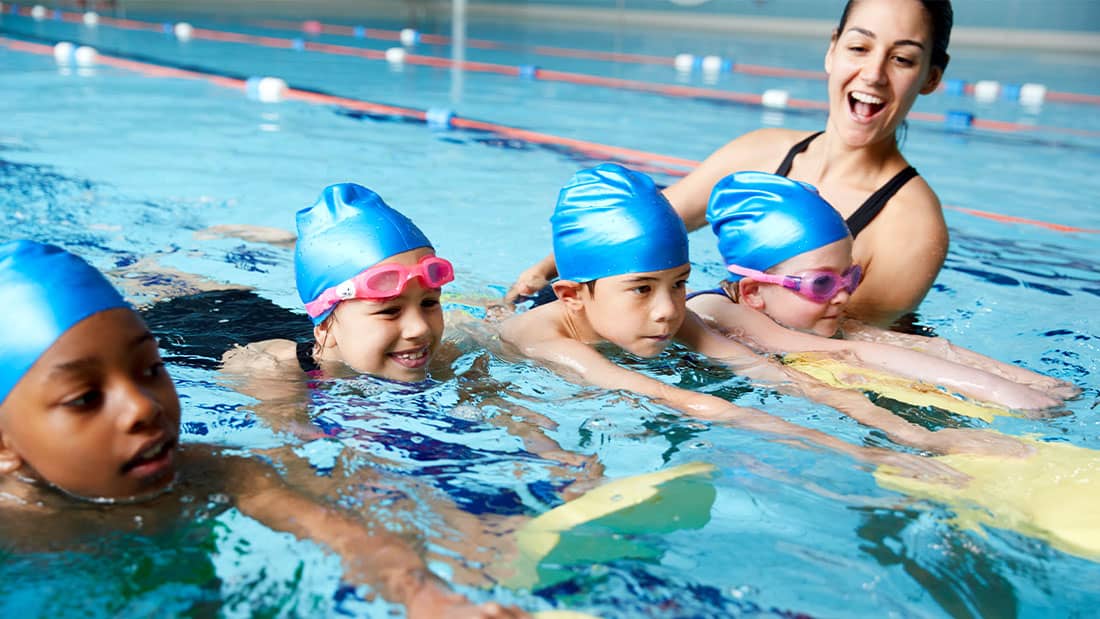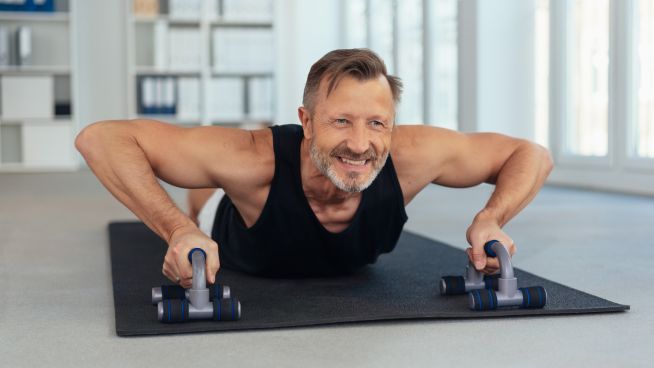4 Ways to Stay Productive While Recovering From a Concussion
Being sidelined with a concussion is frustrating. There’s nothing to ice, no surgery to schedule and no physical therapy to endure, which can leave you feeling helpless and devoid of progress. It’s an “invisible” injury.
Although it’s important to take a concussion seriously and not “push through it” or “shake it off,” you don’t have to be passive in your approach to recovery. Here are four tools that will help you take ownership of your rehabilitation and increase your chances for a full and timely return to your sport.
1. Keep Moving
This tip comes with a caveat: Keep moving, but do so cautiously. The most important action to take after sustaining a concussion is to protect your brain from a second head injury. Immediately after a concussion, the brain enters of period of vulnerability. During this time, a subsequent injury can result in worsened symptoms and prolonged recovery.
While you should avoid activities that put your brain at risk of another injury, you should not be sedentary and mentally inactive. Medical evidence suggests that a moderate level of activity, introduced gradually, is ideal for complete recovery. Too much complex physical and cognitive activity can exacerbate symptoms, but a lack of activity can impede the brain’s ability to heal itself and can lead to a host of unintended psychological consequences, such as anxiety and depression.
Follow the personalized return-to-play guidelines prescribed by your doctor (preferably a neurologist trained in concussion management), only engaging in the next level of activity if your symptoms remain limited. The step-by-step transition back into your sport may look something like this:
- A short (24-48 hours) physical and cognitive rest period immediately after injury. The goal is to limit stimuli that worsen symptoms.
- Low-level aerobic activity, such as walking or stationary cycling
- Simple, non-contact drills that are specific to your sport
- More complex sport-specific drills (still non-contact)
- Normal practice
- Return to competition.
2. Practice Mental Imagery
Athletes use mental imagery, or visualization, to complement physical practice while training, but it has also been demonstrated as an effective strategy for injury rehabilitation. After a concussion, imagery may be beneficial in two ways.
First, it may help your brain rehearse the physical skills of your sport without actually doing them. Studies have suggested that mental imagery activates the brain’s motor cortex—the main area involved in movement—in similar ways as to when the body actually moves.
Secondly, it can keep you motivated and focused on constructive thoughts throughout a challenging recovery period. Seeing yourself performing well counteracts discouraging thought patterns.
Here’s a simple imagery exercise to start practicing. Find a comfortable position—either sitting or lying down—and close your eyes. Take three slow, deep breaths and consciously relax your entire body. Pick one simple action from your sport (e.g., a free throw, swinging the bat, running) and see yourself performing it smoothly and confidently. Once you’re able to do this clearly, consistently and without it worsening your symptoms, you can make the imagery more complex by adding skills or seeing yourself in practice and game situations.
If you have difficulty imagining yourself performing well, try watching old game tape. Imagery perspective—whether you’re watching your performance from inside your body or from the perspective of an outside spectator—does not seem to make a difference in the effectiveness of this technique. One note of caution: watching screens can exacerbate post-concussion symptoms as your brain needs to process rapid visual and auditory cues simultaneously. If this happens, try watching the tape on silent or stop visualizing all together until you’ve recovered more fully.
3. Eat Well and Hydrate
When you’re benched with an injury, it’s easy to revert to unhealthy eating habits. Unfortunately, poor nutrition will only make the transition back to full play that much harder on your body. Additionally, the brain requires energy to perform its functions, including healing. Immediately after a concussion, however, cerebral blood flow is reduced. In essence, there’s a mismatch in energy demands and availability, resulting in an energy crisis. The effect of nutrition on post-concussion symptoms is understudied, but in general, proper fuel is undeniably beneficial to the brain.
So, what should you eat and drink? Well, hydration is critical. Drink plenty of water and avoid alcohol, which dehydrates the body and the brain. With regard to your food intake, your diet should include foods rich in Omega 3’s, healthy fats and protein. Try to eat plenty of fruits and vegetables, as well as nuts, seeds, eggs and lean meat. It’s also good to avoid processed sugar and excess salt.
You don’t have to completely overhaul your diet. Just eat mindfully, knowing that everything you put into your body affects your brain.
4. Do One Thing at a Time
In theory, multitasking enables you to accomplish more in a shorter period of time. In practice, however, multitasking is inefficient for the healthy brain and nearly impossible for the concussed brain.
After a concussion, your brain processes information at a slower pace, which significantly reduces the speed of your actions and reactions. Daily activities take longer to perform, and decisions require a lot more computational power. Your memory and attention may also be impaired, so not only is it difficult to remain focused on the task at hand, but you may forget what you’re doing halfway through.
The key to maximizing your time and accomplishing more is two-fold:
- Be patient. Know that tasks will take longer, so give yourself more time to complete them.
- Focus on one task at a time. Carry it through to completion before moving on to the next task. This avoids having to shift your attention between several different tasks, which ultimately wastes time.
Here are a few unitasking hacks:
- If you feel OK interacting with screens (this often takes a few days), turn off notifications on your phone and open only one tab in your web browser at a time
- When something pops in to your brain, write it down and come back to it later
- Write lists and schedule ample time for each task. It also helps to batch similar tasks in the same concrete time window
It’s natural to view any injury as a setback. But if you approach your concussion recovery with the same commitment that you approach your training, you’ll give yourself the best chance of getting back into game play quickly.
Photo Credit: Steve Debenport/iStock
READ MORE:
RECOMMENDED FOR YOU
MOST POPULAR
4 Ways to Stay Productive While Recovering From a Concussion
Being sidelined with a concussion is frustrating. There’s nothing to ice, no surgery to schedule and no physical therapy to endure, which can leave you feeling helpless and devoid of progress. It’s an “invisible” injury.
Although it’s important to take a concussion seriously and not “push through it” or “shake it off,” you don’t have to be passive in your approach to recovery. Here are four tools that will help you take ownership of your rehabilitation and increase your chances for a full and timely return to your sport.
1. Keep Moving
This tip comes with a caveat: Keep moving, but do so cautiously. The most important action to take after sustaining a concussion is to protect your brain from a second head injury. Immediately after a concussion, the brain enters of period of vulnerability. During this time, a subsequent injury can result in worsened symptoms and prolonged recovery.
While you should avoid activities that put your brain at risk of another injury, you should not be sedentary and mentally inactive. Medical evidence suggests that a moderate level of activity, introduced gradually, is ideal for complete recovery. Too much complex physical and cognitive activity can exacerbate symptoms, but a lack of activity can impede the brain’s ability to heal itself and can lead to a host of unintended psychological consequences, such as anxiety and depression.
Follow the personalized return-to-play guidelines prescribed by your doctor (preferably a neurologist trained in concussion management), only engaging in the next level of activity if your symptoms remain limited. The step-by-step transition back into your sport may look something like this:
- A short (24-48 hours) physical and cognitive rest period immediately after injury. The goal is to limit stimuli that worsen symptoms.
- Low-level aerobic activity, such as walking or stationary cycling
- Simple, non-contact drills that are specific to your sport
- More complex sport-specific drills (still non-contact)
- Normal practice
- Return to competition.
2. Practice Mental Imagery
Athletes use mental imagery, or visualization, to complement physical practice while training, but it has also been demonstrated as an effective strategy for injury rehabilitation. After a concussion, imagery may be beneficial in two ways.
First, it may help your brain rehearse the physical skills of your sport without actually doing them. Studies have suggested that mental imagery activates the brain’s motor cortex—the main area involved in movement—in similar ways as to when the body actually moves.
Secondly, it can keep you motivated and focused on constructive thoughts throughout a challenging recovery period. Seeing yourself performing well counteracts discouraging thought patterns.
Here’s a simple imagery exercise to start practicing. Find a comfortable position—either sitting or lying down—and close your eyes. Take three slow, deep breaths and consciously relax your entire body. Pick one simple action from your sport (e.g., a free throw, swinging the bat, running) and see yourself performing it smoothly and confidently. Once you’re able to do this clearly, consistently and without it worsening your symptoms, you can make the imagery more complex by adding skills or seeing yourself in practice and game situations.
If you have difficulty imagining yourself performing well, try watching old game tape. Imagery perspective—whether you’re watching your performance from inside your body or from the perspective of an outside spectator—does not seem to make a difference in the effectiveness of this technique. One note of caution: watching screens can exacerbate post-concussion symptoms as your brain needs to process rapid visual and auditory cues simultaneously. If this happens, try watching the tape on silent or stop visualizing all together until you’ve recovered more fully.
3. Eat Well and Hydrate
When you’re benched with an injury, it’s easy to revert to unhealthy eating habits. Unfortunately, poor nutrition will only make the transition back to full play that much harder on your body. Additionally, the brain requires energy to perform its functions, including healing. Immediately after a concussion, however, cerebral blood flow is reduced. In essence, there’s a mismatch in energy demands and availability, resulting in an energy crisis. The effect of nutrition on post-concussion symptoms is understudied, but in general, proper fuel is undeniably beneficial to the brain.
So, what should you eat and drink? Well, hydration is critical. Drink plenty of water and avoid alcohol, which dehydrates the body and the brain. With regard to your food intake, your diet should include foods rich in Omega 3’s, healthy fats and protein. Try to eat plenty of fruits and vegetables, as well as nuts, seeds, eggs and lean meat. It’s also good to avoid processed sugar and excess salt.
You don’t have to completely overhaul your diet. Just eat mindfully, knowing that everything you put into your body affects your brain.
4. Do One Thing at a Time
In theory, multitasking enables you to accomplish more in a shorter period of time. In practice, however, multitasking is inefficient for the healthy brain and nearly impossible for the concussed brain.
After a concussion, your brain processes information at a slower pace, which significantly reduces the speed of your actions and reactions. Daily activities take longer to perform, and decisions require a lot more computational power. Your memory and attention may also be impaired, so not only is it difficult to remain focused on the task at hand, but you may forget what you’re doing halfway through.
The key to maximizing your time and accomplishing more is two-fold:
- Be patient. Know that tasks will take longer, so give yourself more time to complete them.
- Focus on one task at a time. Carry it through to completion before moving on to the next task. This avoids having to shift your attention between several different tasks, which ultimately wastes time.
Here are a few unitasking hacks:
- If you feel OK interacting with screens (this often takes a few days), turn off notifications on your phone and open only one tab in your web browser at a time
- When something pops in to your brain, write it down and come back to it later
- Write lists and schedule ample time for each task. It also helps to batch similar tasks in the same concrete time window
It’s natural to view any injury as a setback. But if you approach your concussion recovery with the same commitment that you approach your training, you’ll give yourself the best chance of getting back into game play quickly.
Photo Credit: Steve Debenport/iStock
READ MORE:

